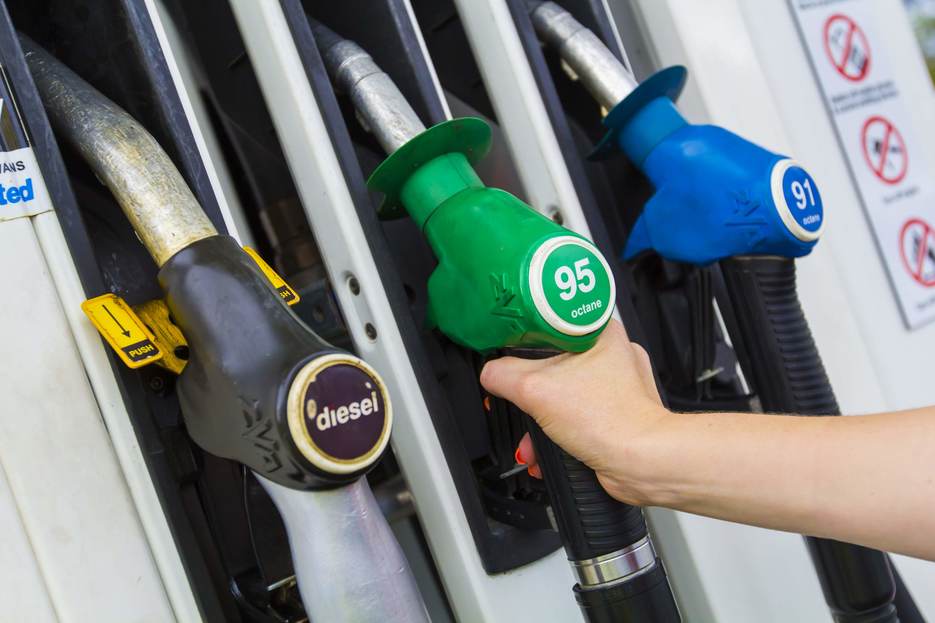Petrol price pain continues for motorists in March quarter
It’s been an expensive start to the new year at the bowser, with fuel prices remaining stubbornly high for the first three months of 2023.

RACQ’s latest quarterly Fuel Price Report found in Brisbane, the average price for ULP in March was 187 cents per litre (cpl), which was 10 cents higher than the average price in December. However, over the entire March quarter, prices only rose by 1.6cpl.
The Club’s Principal Economic and Affordability Specialist Dr Ian Jeffreys said several factors were to blame.
“Average petrol prices in the March quarter increased slightly, even though crude oil prices were lower on average,” Dr Jeffreys said.
“Higher retail prices were caused by the timing of the price cycle in south east Queensland and an increase in fuel excise in line with CPI increases in the second half of 2022.”
In March, the cheapest unleaded in the state could be found in the Whitsundays and Bundaberg, at an average of 171.9cpl and 173.1cpl respectively.
Longreach recorded the most expensive, with an average of 207.5cpl.
Dr Jeffreys said there had finally been a slight reprieve for diesel drivers in 2023, with averages falling below $2 a litre for the first time since April 2022.
“Diesel averages were around 20 cents a litre cheaper in March, compared to December which is great news for motorists driving a diesel car,” Dr Jeffreys explained.
“The dip in diesel prices was due to the wholesale price of diesel fuel dropping gradually as world oil prices declined. However retail margins do remain high so we think fuel companies could be doing more to lower the price they’re charging consumers.”
For diesel, Miles (188.9cpl) and Gympie (191.2cpl) were the cheapest locations to buy, while Longreach was the most expensive at 215.3cpl.
RACQ expects ULP prices to rise again in the June quarter, as the recent increase in oil prices could add as much as five cents per litre to average prices.
This follows OPEC’s announcement to reduce global oil production by another 1.16 million barrels from May.
To read the full report click here.
Related topics
Things to note
The information in this article has been prepared for general information purposes only and is not intended as legal advice or specific advice to any particular person. Any advice contained in the document is general advice, not intended as legal advice or professional advice and does not take into account any person’s particular circumstances. Before acting on anything based on this advice you should consider its appropriateness to you, having regard to your objectives and needs.
Insurance Products (excluding Travel Insurance) are issued by RACQ Insurance Limited ABN 50 009 704 152 (RACQI) and arranged by its agent, RACQ Distribution Services Pty Ltd (RDS) ABN 35 116 361 650, AFSL 567130 and RDS' authorised representatives (including RACQ Operations Pty Ltd ABN 80 009 663 414, AR No. 234978 (RACQO). Conditions, limits and exclusions apply. RDS and RACQO are in the RACQ group of companies. One of the companies in the RACQ group of companies has a minority shareholding in RACQI.
RDS and RACQO have not taken your personal objectives, circumstances or needs into account when preparing advice regarding insurance products and you will need to consider whether the advice is appropriate for you. Read the Product Disclosure Statement (PDS) and any applicable Supplementary PDS before making a purchase decision on this product. You can also access our Target Market Determinations on this website. RDS receives a commission from RACQI for the policies it arranges. RACQO receives fees paid for services it provides to RDS. Further details about remuneration are available on request prior to purchasing.
Banking and loan products issued by Members Banking Group Limited ABN 83 087 651 054 AFSL/Australian credit licence 241195 trading as RACQ Bank. Terms, conditions, fees, charges and lending policies apply. This is general advice only and may not be right for you. This information does not take your personal objectives, circumstances or needs into account. Read the disclosure documents for your selected product or service, including the Financial Services Guide and the Terms and Conditions, and consider if appropriate for you before deciding.
Except for RACQ Bank, any RACQ entity referred to on this page is not an authorised deposit-taking institution for the purposes of the Banking Act 1959 (Cth). That entity’s obligations do not represent deposits or other liabilities of RACQ Bank. RACQ Bank does not guarantee or otherwise provide assurance in respect of the obligations of that entity, unless noted otherwise.
RACQ Bank subscribes to the Customer Owned Banking Code of Practice which establishes higher standards than the law requires. The Code reflects modern consumer expectations and developments in approaches to issues such as consumer vulnerability, guarantors, and supporting customers through financial hardship. Please read our Customer Owned Banking Code of Practice page for more information.
RACQ Operations Pty Ltd (ABN 80 009 663 414 AR 000234978) and Members Travel Group Pty Ltd (ABN 45 144 538 803 AR 000432492) are acting as an Authorised Representative of the issuer of the insurance, Tokio Marine & Nichido Fire Insurance Co., Ltd. (ABN 80 000 438 291 AFSL 246 548). Any advice set out above is general in nature only, and does not take into account your objectives, financial situation or needs. Before purchasing any travel products, please consider the RACQ Travel Insurance Product Disclosure Statement (PDS) and the Target Market Determinations (TMDs) that apply to these products. Whilst the PDS outlines the Terms and Conditions of these products, the TMDs outline the intended class of customers that comprise the target market for these travel products. This will allow you to consider which products best suit your objectives, financial situation and needs and consider the products appropriateness to your personal circumstances. TMDs also outline matters involving the distribution and the review of these products. The PDS, Supplementary PDS and TMDs for each travel product can be found here.
